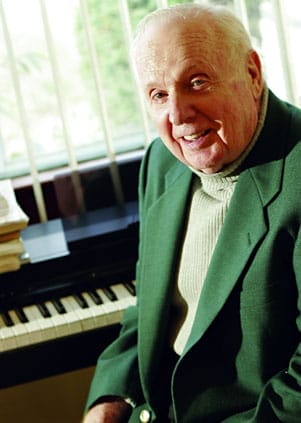 Marketing professor Paul Green is often called “the father of conjoint analysis,” the powerful predictive statistical technique and backbone of market research.
Marketing professor Paul Green is often called “the father of conjoint analysis,” the powerful predictive statistical technique and backbone of market research.
Conjoint analysis allows marketing managers to make accurate decisions about what products and services to sell — and helped make Green marketing’s most cited author. Green, who retired in 2005, earned his bachelor’s degree in mathematics from Penn, then spent 12 years working in industry, including stints at Sun Oil, Lukens Steel, and DuPont, while also completing his PhD at Penn. Green’s years in industry provided the real-world direction his research would ultimately become famous for. “Sometimes these two motivations—the theoretical and the pragmatic—will merge and lead to a high-impact result, that is, an idea that is both intellectually exciting and appealing to the practitioner,” he once observed.
In 1962, Green left DuPont to work full time in Wharton’s Marketing Department. Two years later, Green came up with the idea and the name for conjoint analysis while reading a research article from a mathematical psychology journal that provided a new system to measure rank order data.
“It occurred to me after reading the article that this could be applied to marketing as opposed to just a measurement,” Green said. “We could give people bundles of things that they might want and measure how they react.” The idea that his models could be useful beyond finding out what characteristics already appealed to people was a revelation.
Green began to wonder if he could predict what people would do in the future based on how they answered questions about likes and dislikes. Today, Green’s statistical modeling technique has been applied to an enormous list of products and companies, from those selling bar soaps and gasoline to those selling luxury automobiles and pharmaceuticals.
In 1996, Green won the Lifetime Achievement Award from the American Marketing Association, while last year, he won the INFORMS Impact Prize for lifetime achievement and was named the first recipient of the MIT Sloan School of Management Buck Weaver award.

























